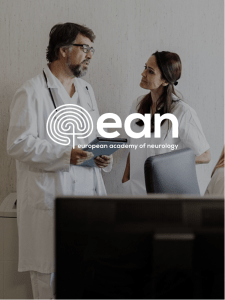The European Academy of Neurology (EAN) is a non-profit, independent organisation representing more than 45,000 members, as well as 47 European national societies. As a medical society EAN aims to promote neurological excellence through events, a professional congress and digital content, thereby leading to improved patient care and aiming to keep Europe at the forefront of neurological knowledge and research.
The Challenge
To serve best the needs of its members & stakeholders and cement EAN’s image as a strong provider & partner for educational content, EAN wanted to establish a customised platform, optimised to become the go-to online resource for Neurological Education in Europe and beyond.
To offer the users of EAN’s digital & information services a continuous experience the platform had to have a strong integration with EAN’s central user database and EAN’s website(s). Therefore one goal was to offer a seamless switch for logged-in users between their central member profile (myEAN), the Totara site and other EAN sites. The Totara site should assign viewing rights and display recommendations based on the CRM profiles.
In the contest for the Neurologists’ professional attention and limited time the platform had to be one step ahead regarding easy access to content, simple navigation, appealing interaction and encouragement of continuous engagement allowing individual learning paths.
The Solution
Totara’s REST-API allowed to set up a tailored import of the CRM’s user data, including a mechanism to refresh the individual information with each login of a user.
Through Single Sign On and the visual integration of the corporate site’s main navigation the users can experience the various services of ean.org as a seamless journey. Also, should EAN change anything in the main navigation on ean.org, via JSON the change is immediately adopted for the Totara site.
Totara’s variability to configure dashboards and categories were one key to manage viewing rights and recommendations keeping a user friendly structure, while allowing each learner a maximum of free choices, including one-click self-enrolment. The user’s level of engagement is then raised by Totara’s many features for presenting and structuring content enhanced with interaction and feedback functions.
Another feature to enhance the appeal for users as well as for content creators was the introduction of a special faculty page with a featured profile page for each contributor. The win-win solution sees renowned faculty members pull in learners to discover the platform and their content while the content creators increase their professional visibility. Technically the creation of a new data object “content creator” allowed to link contributor profiles and their content in an automated way that offers the users many comfortable access points to an author’s specific content, from the dashboard and the faculty page as well as from the learning catalogue and each course.
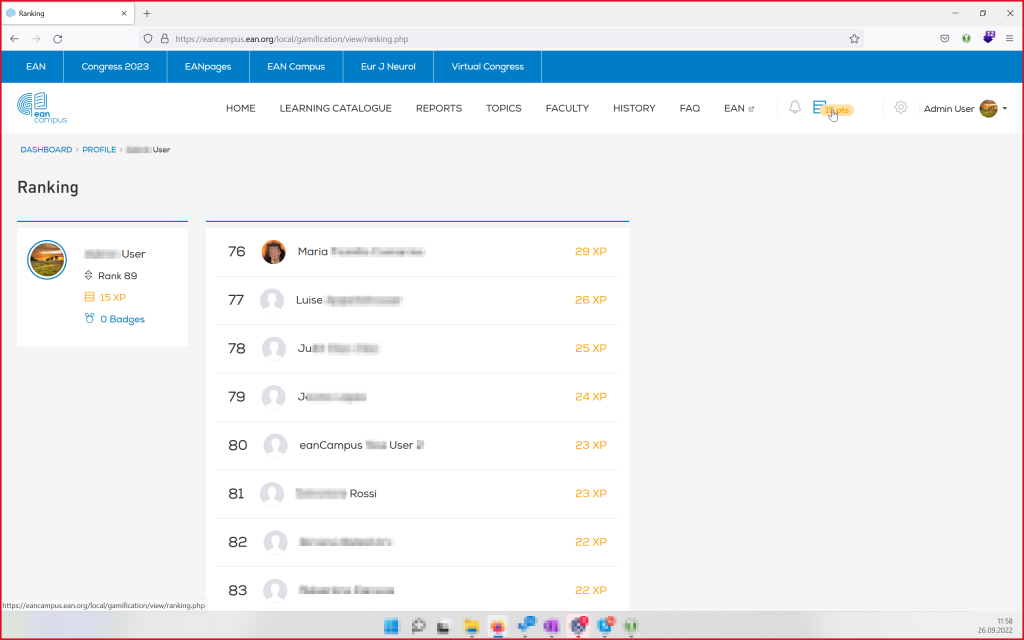
Enhancing Totara’s Badge System allowed to introduce a new spin on Gamification: A playful aspect of earning badges like “user of the month” and climb up in a ranking was combined with the technical adaptation of the specific point system used to award CME certifications in Neurology (based on attributed learning time).
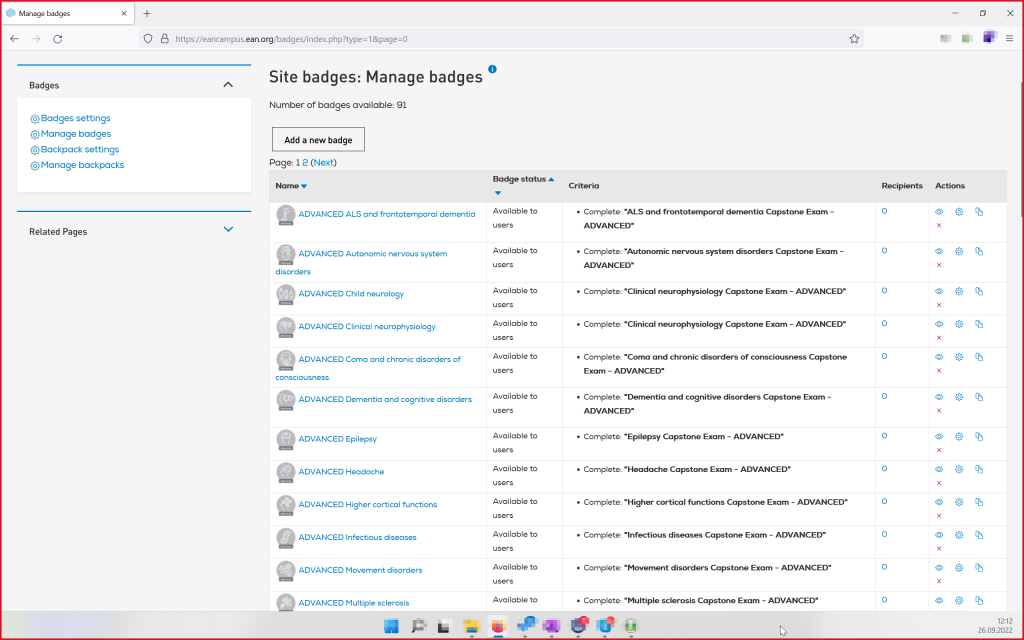
By making the learning time an editable value for admins and by connecting its attribution to medical topics and experience levels, the user’s progress within each topic is documented in a way that could allow them to claim CME-credits officially also outside the platform. This way the appealing learning experience gains a special value within the professional field.
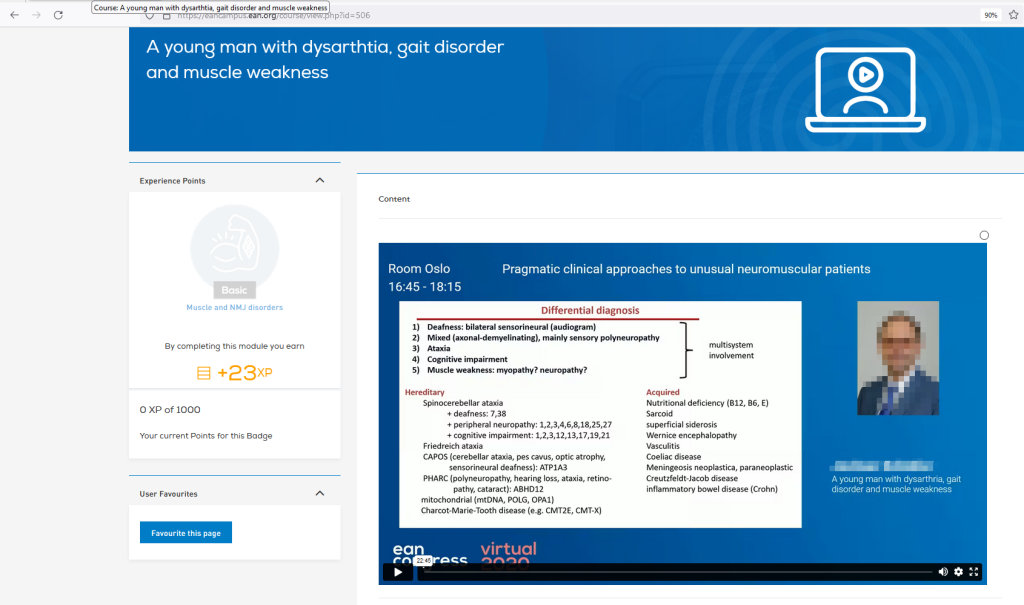
The Results
After a year of brainstorming and another year of development, EAN was happy to introduce the eanCampus to users at the Annual Congress in 2022 (June 25-28, 2022). Since launch, the platform has seen relatively regular traffic from EAN Members, with monthly peaks in traffic around the dates of virtual events.
Over 1,500 pieces of on demand content have been included on the platform, including recordings of live presentations, case studies, interactive courses, guidelines with quizzes, and individual podcast episodes. Learners have utilised all types of content, and have indicated that they are very satisfied with the implementation of each type: The platform has been extremely well-rated by users, with over 500 feedback forms submitted on various contents, 96% of which indicating that the technical quality of the contents met or exceeded their expectations.
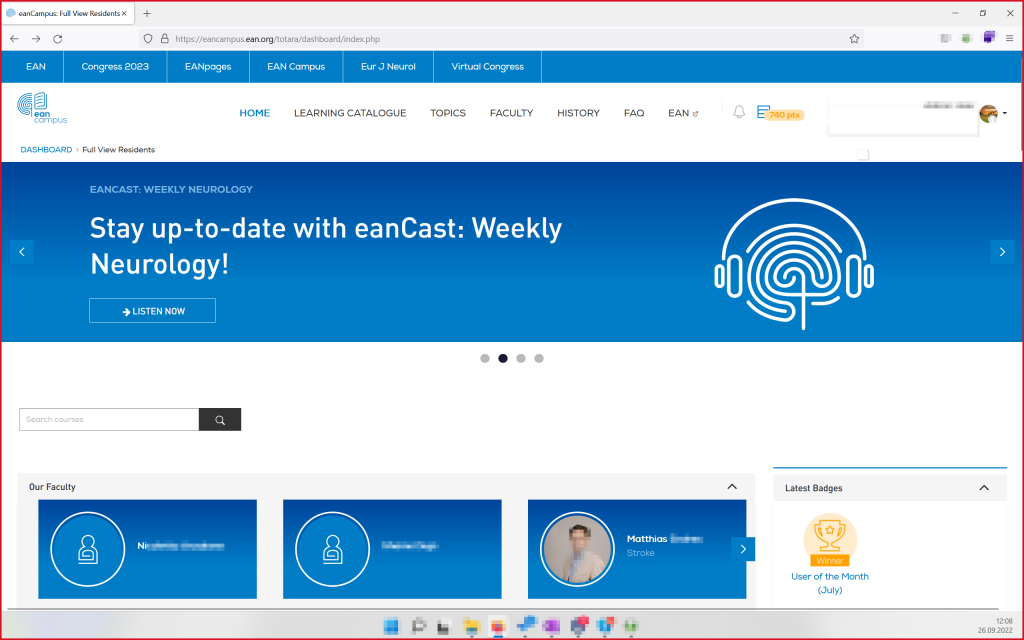
In correlation with excellent user feedback, EAN has also seen the number of Members grow in 2023, particularly in one of the main target groups of Neurological Residents and Research Fellows
One to two virtual events are hosted by EAN each month, which previously consisted of a significant amount of administrative work in regards to registration and follow-up. However, the implementation of the Seminar activity in the Totara system has significantly decreased the number of administrative hours necessary. Due to the SSO integration between the eanCampus and myEAN, only learners with the correct permissions are given access to the seminar activity, which removes the need to cross-check learner Membership in the CRM.
Additionally, follow-up has been integrated into the course, to allow all attendees immediate access to the session quiz and feedback forms if they have attended the session. Following their completion of all three criteria (attendance, quiz, and feedback), learners are immediately issued a certificate of attendance. This has replaced the need for individualised follow-up with attendees, and thus reduced administrative workload significantly.
“Great flexibility of the platform, which enables the members to set their own learning pace offering a wide selection of all subspecialities with individualized topics of interests and customized schedule that fits one’s agenda, this is my most favourite feature of the eanCampus.”
– Yildiz Degirmenci, EAN e-Learning Associate Editor


